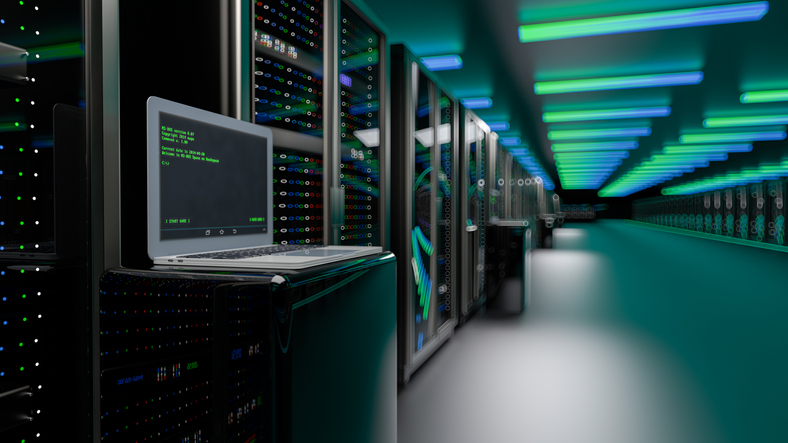Sustainability in data centers: where do things stand? - Techzine
Society tends to treat data centers as energy guzzlers to the extreme. However, data centers bring together parties that consider sustainability paramount. What is the state of affairs on this topic? How sustainable are data centers really? We discuss it in a roundtable discussion with experts from Dell Technologies, Eurofiber, NorthC Datacenters, and Schneider Electric.
At its core, a data center is already more sustainable than the alternative of the past, which is managing your own on-prem infrastructure. Today, these hardware resources are pooled together to avoid needless duplication. Jan Bonke, Business Innovation Officer at Eurofiber Netherlands, talks about IT moving away from office “broom closets” and into the data center. In Bonke’s previous position, he operated six data centers. He sees that clients use different methods to manage their IT nowadays. Some have all their hardware managed by someone else, while “plenty of clients” still manage the servers themselves. Nevertheless, in all cases, Eurofiber provides the connectivity as the data center operator.
Moving Towards Sustainability
Ronald van den Bosch, Group Director Projects at NorthC Datacenters, sees that the migration from on-prem to data centers has already led to the adoption of other standards. “Virtualization is just common sense nowadays,” he points out. There are many additional benefits to using a software layer on top of hardware, which we’ll return to later. But first, we look at what “sustainability” is often socially synonymous with: ecological care and, thus, minimization of resource usage.

After the IT equipment itself, the cooling infrastructure required by it is the biggest energy consumer. Van den Bosch notes that cooling represents 20 percent of total consumption. But as Loek Wilden, Offer Manager Secure Power BeNe at Schneider Electric, cites, the most ecological temperature is not necessarily the maximum operating temperature. In 2009, for example, research by Dell Technologies already showed that the sweet spot for minimal overall energy consumption is between 24 and 27 degrees Celsius. Wilden explains that if one were to choose a higher temperature, one typically consumes more energy owing to the servers’ fans having to work harder, eliminating the savings made by sticking to a higher internal temperature.
Efficiency and Energy Consumption
Ruud Mulder, Country Pre-sales & Solutions Architecture Manager Netherlands at Dell Technologies, emphasizes hardware vendor designs’ pivotal role in this process. For example, Dell focuses its cooling on the components that need it most rather than taking a more generic approach. Already anticipating a future of GPU-filled data centers, Mulder says that “those [GPUs] need a lot more power and cooling than a regular CPU.”
Van den Bosch of NorthC Datacenters adds that fully utilizing the cooling capacity of a data center is also not the best way forward. “If we set all cooling systems to 100 percent, that’s also anything but ecologically sustainable. In a data center, we pay a lot of attention to finding the optimal set points to achieve the highest energy efficiency.” On top of that, the low-hanging fruit has now been picked, says Eurofiber’s Bonke. These days, it’s harder to make sustainability gains.

Power Usage Effectiveness
The key is clear: it’s all about getting to the lowest possible PUE (Power Usage Effectiveness). It is the industry yardstick for organizations within the data center world. The closer PUE is to 1, the better. 1 represents the total consumption of all IT resources. If all that consumption is converted to compute, we have a PUE of 1.
In practice, however, a PUE of 1 is almost impossible to achieve because energy is also needed for cooling and other things. For example, NorthC Datacenters is designing new data centers with a PUE of 1.2, as we heard recently. AWS announced a few weeks ago that their PUE averages 1.15 and that it even has a site that achieves 1.04.
Challenges and Solutions
The emphasis on frugality sometimes puts vendors in a bind. “You don’t know exactly what a customer is doing in their rack,” Bonke says. “But you have to justify it to the authorities.” For example, data center providers have to convert alternating current (AC) to direct current (DC) more than once and vice versa. This leads to unnecessary waste. Bonke: “We also don’t own the equipment. Maybe the customer is using Eco mode, but we can’t enforce that.”
Moreover: clients buy a specific capacity from Eurofiber, which the company cannot re-deploy if the actual consumption ends up being smaller. “A client may say it needs 6 kW of power, but later, it turns out that about 2 kW was sufficient. We can’t make that extra power capacity available again.” This creates theoretical congestion rather than a real gridlock, Bonke states.
A Vision for the Future
It has quickly become apparent that sustainability goes beyond reducing consumption. All the experts, therefore, describe it as an issue where one has to treat data centers holistically. This still happens too little, a conclusion which the roundtable discussion repeatedly leads us to. For example, Wilden of Schneider Electric claims that consumption monitoring is used reactively. “The motivation is: is something strange happening in the infrastructure?” First, he believes the industry needs to take preventive action.

Performance gains in this area revolve around affecting PUE beyond the decimal point, Van den Bosch argues. But, “Less attention, also in legislation, is being given to the energy efficiency of IT equipment itself,” he says.
Collaboration for a Sustainable Future
Collaboration in the IT industry is the key to sustainability. The will is certainly there, although organizing partnerships is something all parties can still take steps in. Customers therefore need to be enthused, says Bonke of Eurofiber. The data center business is full of innovation, driven both b




















